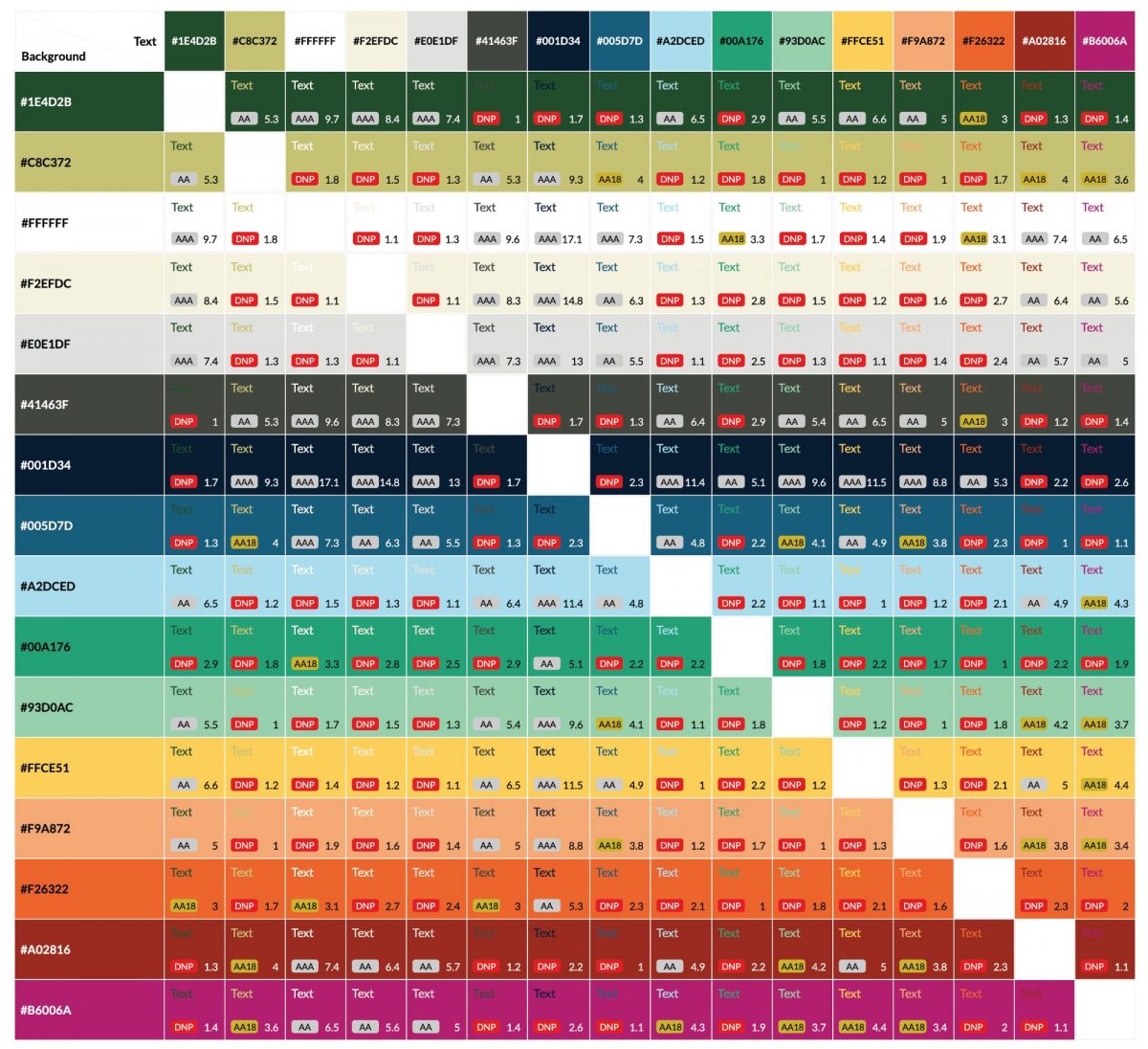Second to the iconic Ram’s Head, “green and gold” is the backbone of Colorado State University’s visual brand – it's even in our fight song!
But the colors of CSU extend beyond green and gold. The College of Liberal Arts has a palette of accent colors that complement the University’s core colors of CSU Green, CSU Gold, and White. These secondary accent colors are unique to the College of Liberal Arts.
It is important that our departments follow the color guidelines below so we maintain the college brand, follow color accessibility standards, and provide a consistent visual experience for our audiences. The colors in a design or on a website communicate our brand personality and signals to our audience that we are Colorado State University.
The University launched a new Find Your Energy brand in Fall 2023 that replaces individual college VBLs. Reference the updated brand guidelines on the CSU Brand website.
The content below is being kept as a reference for CLA websites still using the 2020 VBL. We appreciate your patience as we update all CLA websites to reflect the new university-wide brand.
Color Formats
The College color palette is available in different “formats” depending on web or print use:
Hexadecimal
Hex codes are the primary color formats used on the web, identified with the “#” symbol followed by three or six digits
RGB
RGB (red, green, blue) is a coding method to tell computers how to display color digitally. Use RGB color in electronic/digital design, such as PowerPoint
CMYK
CMYK (cyan, magenta, yellow, and key) are the primary colors of pigment and should be used when designing content for printing, such as posters
Pantone
Pantone Management System (PMS) is a library of colors for printed materials. Similar to CMYK, it is preferred for print shops to reproduce an exact color no matter the program used to create the design
Primary Brand Colors
The primary brand colors of the College of Liberal Arts brand are the same as the University. We recommend using these generously whenever you are communicating on behalf of CSU. It is best practice to have CSU Green present on all materials – print or digital.
Tip: When designing publications, consider the ratio of the Ram’s Head. Green dominates the other colors.
CSU Green
HEX: #1E4D2B
RGB: 30, 77, 43
CMYK: 92, 18, 94, 61
PMS: 357
CSU Gold
HEX: #C8C372
RGB: 200, 195, 114
CMYK: 11, 6, 64, 13
PMS: 617
CSU White
HEX: #FFFFFF
RGB: 255, 255, 255
CMYK: 0, 0, 0, 0
PMS:
Accent Brand Colors
The accent colors below are unique to the College of Liberal Arts. Designed to be complementary to the primary University colors, these options are available to give CLA and its departments and units the ability to stand out from others on campus. Be cautious of using too many of these colors in one design as CSU Green should still be dominant in your designs.
Pale Gold
HEX: #F2EFDC
RGB: 242, 239, 220
CMYK: 5, 3, 14, 0
PMS: 617 (20% tint)
Pale Gray
HEX: #E0E1DF
RGB: 224, 225, 223
CMYK: 4, 3, 4, 7
PMS: 418 (10% tint)
Dark Gray
HEX: #41463F
RGB: 65, 70, 63
CMYK: 38, 26, 40, 72
PMS: 418
Navy Blue
HEX: #001D34
RGB: 0, 29, 52
CMYK: 100 47 22 82
PMS: 303
Medium Blue
HEX: #005D7D
RGB: 0, 93, 125
CMYK: 73, 13, 0, 57
PMS: 7699
Light Blue
HEX: #A2DCED
RGB: 162, 220, 237
CMYK: 34, 0, 5, 0
PMS: 2975
Jade
HEX: #008763
RGB: 0, 134, 99
CMYK: 82, 0, 67, 11
PMS: 7724
Mint
HEX: #93D0AC
RGB: 147, 208, 172
CMYK: 43, 0, 41, 0
PMS: 345
Maize
HEX: #FFCE51
RGB: 255, 206, 81
CMYK: 0, 19, 79, 0
PMS: 1225
Apricot
HEX: #F9A872
RGB: 249, 168, 114
CMYK: 0, 40, 59, 0
PMS: 714
Tangerine
HEX: #F26322
RGB: 242, 99, 34
CMYK: 242, 99, 34
PMS: 166
Crimson
HEX: #A02816
RGB: 160, 40, 22
CMYK: 8, 92, 100, 33
PMS: 484
Magenta
HEX: #B6006A
RGB: 182, 0, 106
CMYK: 7, 100, 10, 21
PMS: 227
Recommended Colors by Discipline
With such a large palette of accent colors to work with, we recognize the decision fatigue and confusion about how to use the colors strategically. To help ease concerns about which colors pair well together in our VBL, MarComm developed color palettes by discipline.
These palettes are only recommendations and are not required.
Arts
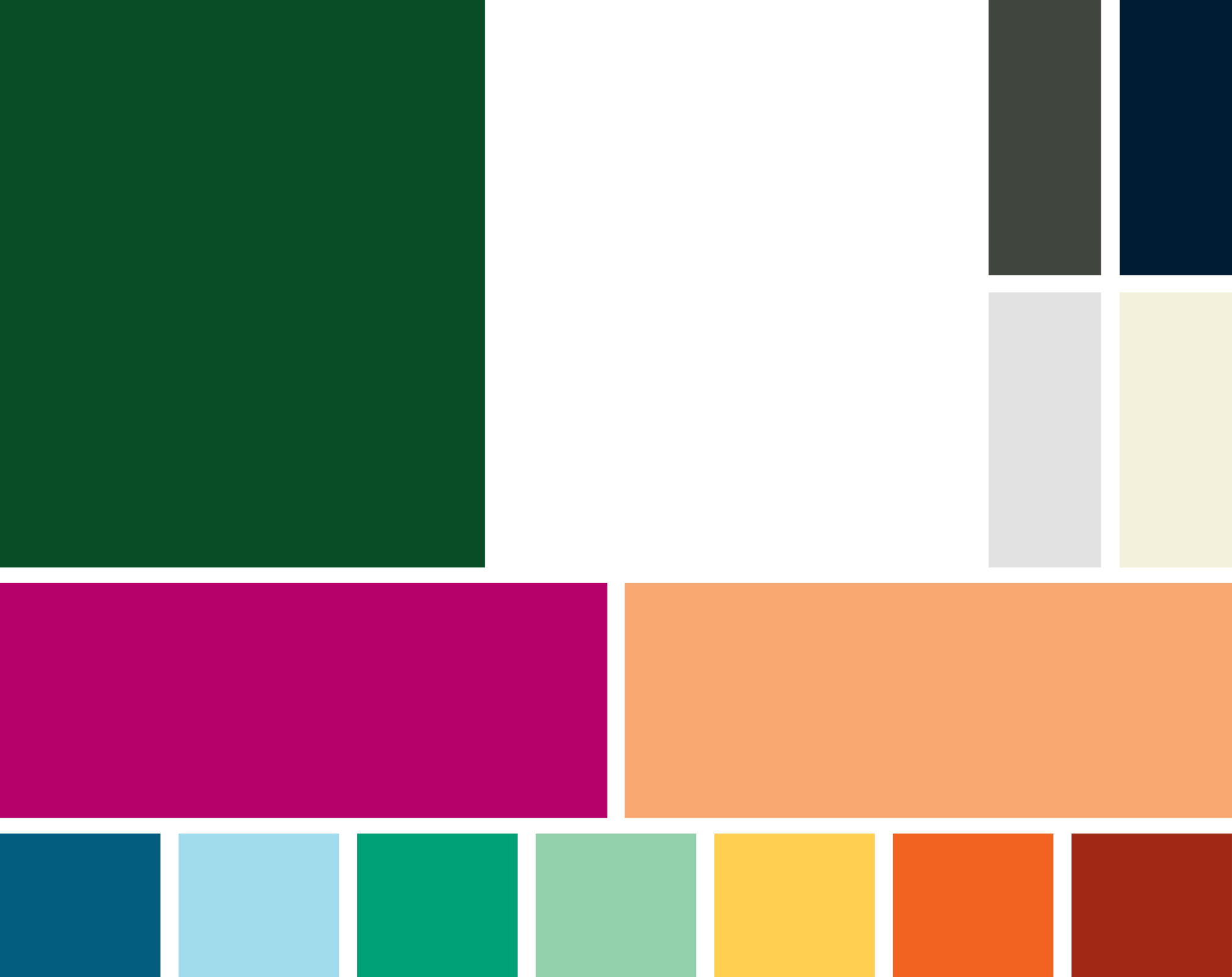
- Art and Art History
- Dance
- Music and Music Therapy
- Theatre
- LEAP Institute for the Arts
Humanities
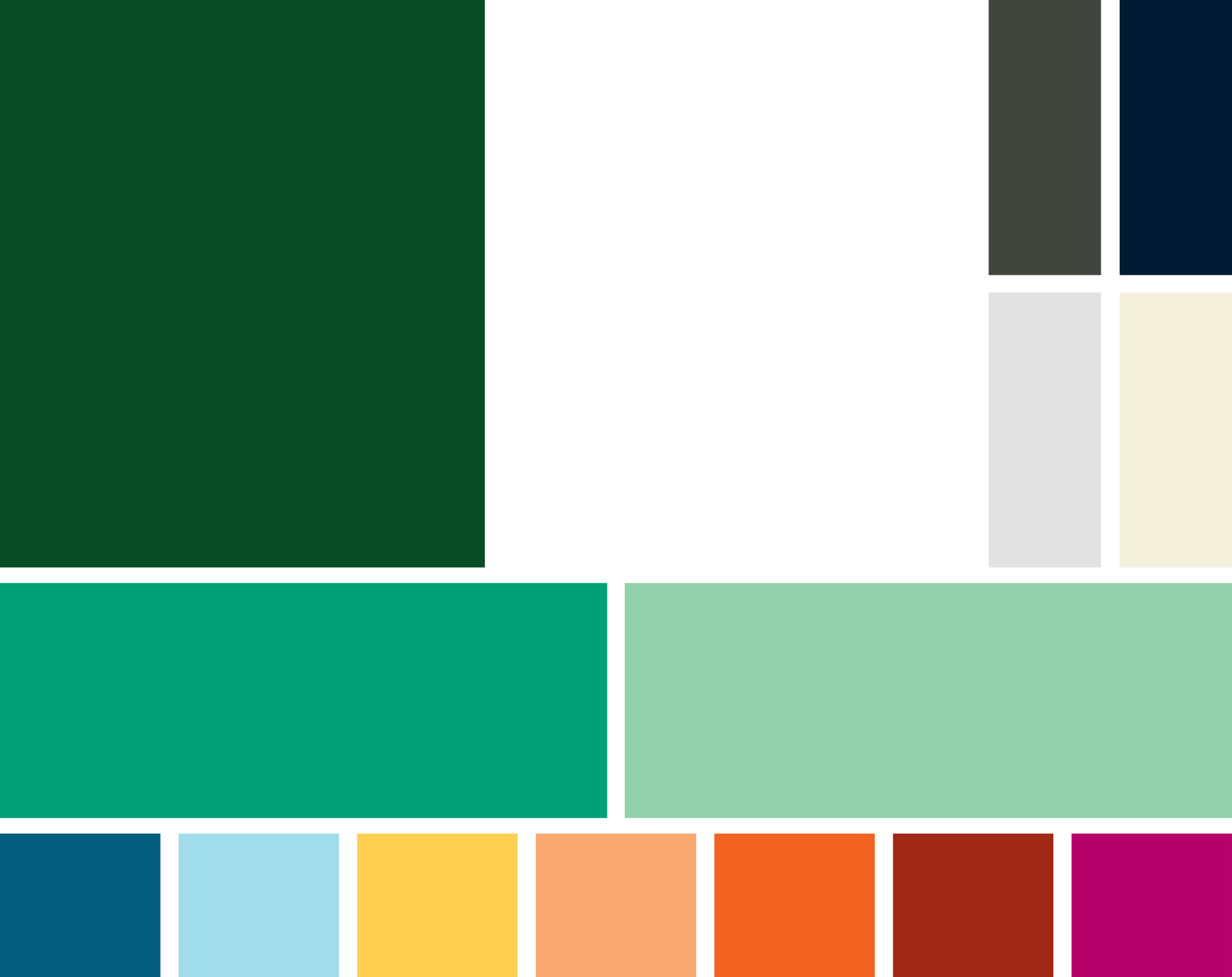
- English
- History
- Languages, Literatures, and Cultures
- Philosophy
Social Sciences
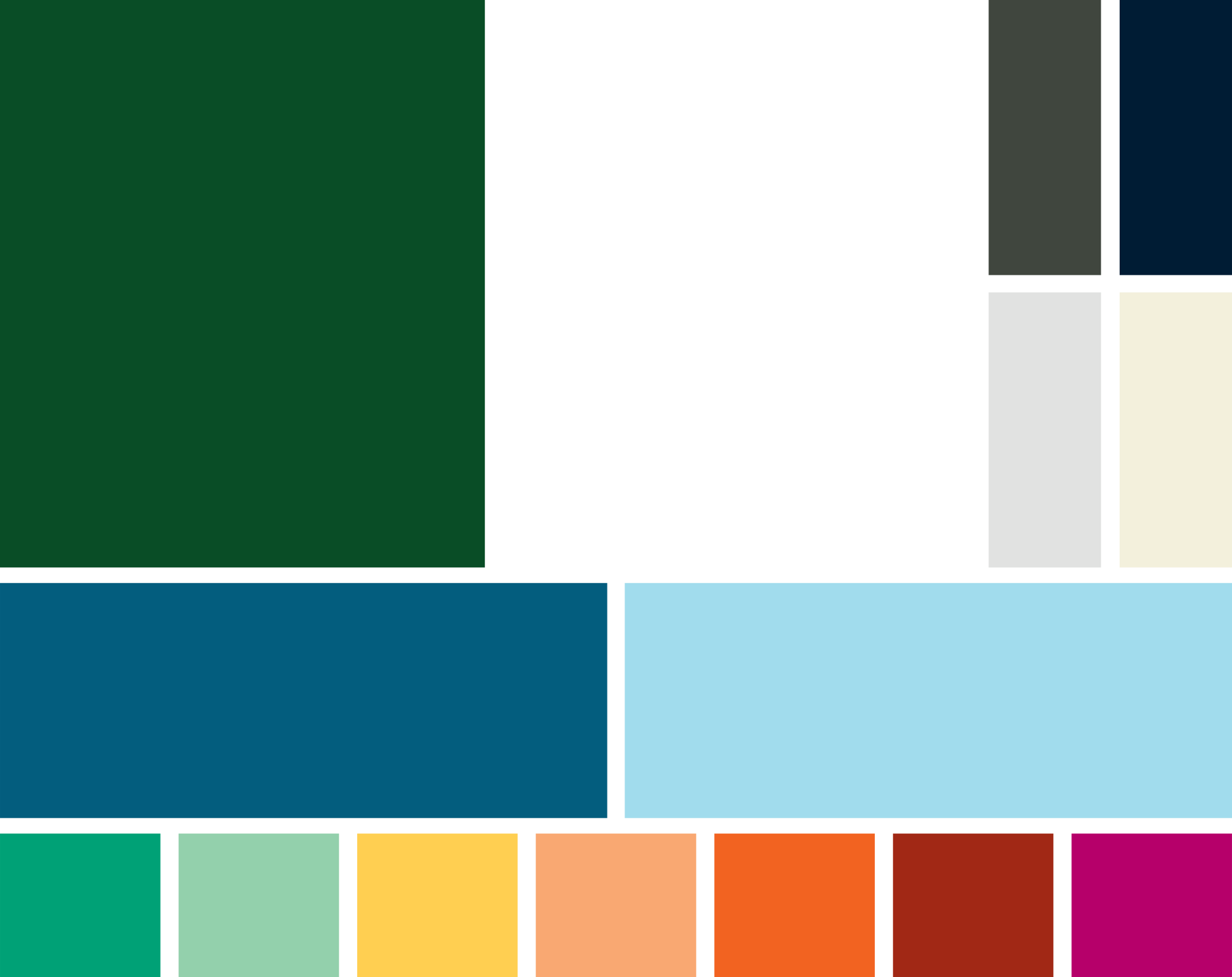
- Anthropology
- Communication Studies
- Economics
- Ethnic Studies
- Geography
- Journalism and Media Communication
- Political Science
- Public Policy and Administration
- Sociology
- Sport Management
- Women's and Gender Studies
Interdisciplinary
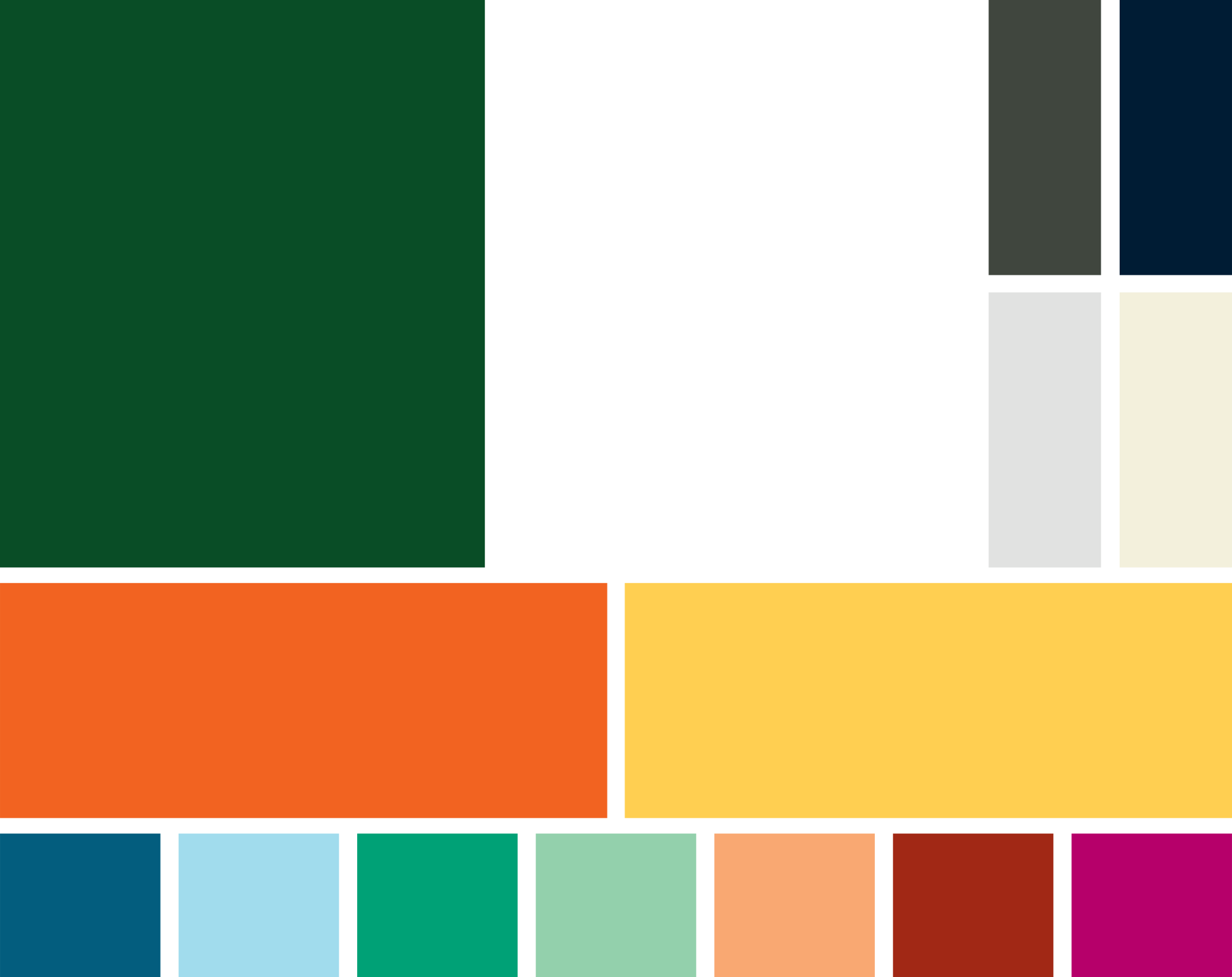
- Interdisciplinary Liberal Arts
- International Studies
Color Accessibility
Color accessibility ensures that all materials, particularly web content, is accessible to everyone, including those with disabilities.
Using the chart below, it is easy to select color combinations for foreground (text) and background colors, and colors to convey meaning, that have enough contrast to meet the Web Content Accessibility Guidelines (WCAG) 2.0 AA requirement. See the Web Accessibility page on the CLA IT website for more information.
